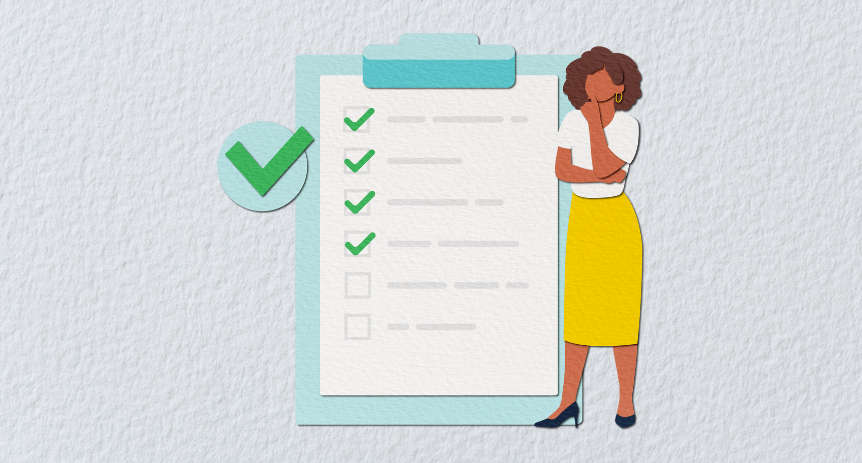Stepping into a classroom as a long-term substitute is rewarding on many levels. You get to know students in ways that are impossible when you’re in a new classroom every day. Behavior becomes routine, and you can enjoy the comfort of knowing where you’ll be teaching for the upcoming weeks or months. Many of the unknowns of subbing are erased when you land a long-term assignment.
Because you’ll be in the same classroom for an extended period of time, it’s important to start off right.
Make time for introductions
Since you’ll be spending a lot of time with this group of students, it’s important that you get to know them. Show up on the first day ready to devote some time to introducing yourself to students and getting to know a little about them. It’s important to learn students’ names and use them. Not only does this head off potential behavior issues, but it makes students feel valued.
Be prepared with an age- and grade-level appropriate icebreaker. These are short, fun games intended to share information about each other. There are many out there to choose from, but an especially fun one is called two truths and a lie. Students brainstorm and write two pieces of true information and an untrue statement on a note card and then introduce themselves using this information. The class has to guess which statements are true and which is the lie. Students can let their imaginations run wild with this icebreaker.
Remember, letting students learn about you is also an important step in building relationships. If they know you love animals and have six cats, you may find that you’ve got common ground with some of your students.
Learn how the class runs
Knowing you’ll be subbing in a class long-term is fantastic because you don’t have to learn and implement new rules every day. The classroom teacher has already laid a foundation for how the class is supposed to run. Use this to your advantage. Students may momentarily “forget” the rules when a substitute walks into the room, but show them you’ll refresh their memories if necessary.
The best way to get to know how a class runs is to visit it in action! Contact the regular classroom teacher and see if they are willing to introduce you to students and allow you to briefly view how the class runs prior to the start of the absence. You can even ask the full-time teacher if they would be willing to let you co-teach and/or lead some classroom routines under their supervision. Take notes while you’re there so you can implement all the good ideas you see and hear.
If you’re not in a position to visit the class and be introduced by the regular teacher, that’s okay too, but do make sure to review the classroom rules and procedures. Look for any rules posted around the classroom, and when in doubt, ask the teacher next door.
Consistency is key
Even if you’d do things differently in your own classroom, remember that you’re filling in. Because of this, you’ll want to keep everything the same as the regular classroom teacher. Follow the pre-established rules, policies, procedures, and schedule. If you don’t like the layout of the desks or the lineup procedure, try to look past it. You may think you’re doing students a favor by changing things up, but this could cause problems when the absent teacher returns. Students thrive on consistency, and you want to ensure that although their teacher is a different person, as much as possible will remain the same (consistency also makes the substitute teacher’s job a whole lot easier as well).
Communicate effectively
Every classroom is comprised of many moving parts. From the teacher to students, to admin and colleagues, it takes a number of people to create a successful school day. Prior to the start of the absence, find out what the expectations are from your supervisor, the principal, or administrator. Are you planning lessons or following plans the classroom teacher has left for you? Will you input grades or leave them for another teacher? Will you contact parents, or is this left to another school official? These are all good things to consider.
Speak with the teacher about their expectations, too:
- Do they want you to follow their plans exactly?
- Are they flexible in allowing modifications based on your professional experience?
- Do they want a daily, weekly, or monthly report?
- Also consider how the teacher would like student materials organized. Should the students hold on to it, or should the sub have a place for packets, worksheets, books, etc?
Each teacher will be different, as will their expectations of how the teacher-sub relationship will work. Keep the lines of communication open, and you’ll be successful.
And don’t forget, teachers are really helpful people! Find a colleague who teaches the same material — the teacher next door will do. Introduce yourself and continue to check in with them periodically. This teacher can be a lifesaver for any issue, whether it’s fixing finicky technology, assisting with a behavior problem, or lending a listening ear.
Be prepared for the transition
There are always those students who will test your boundaries. Some may even miss their regular classroom teacher. However, these are the same students who will lament your leaving when the time comes. Students get used to their routine and seeing the same face every day. It’s not that they don’t like you and enjoy having you in their class, they’re just used to their regular teacher, and change doesn’t always come easily.
Be prepared for students to tell you they wish their teacher would come back. It’s nothing against you. Along those lines, don’t shy away from having conversations with students. If a student is pushing boundaries, perhaps they are missing the attention that their teacher would usually give them. This is a great opportunity for you to bond with the student and make them feel seen and valued.
Ultimately, some days will run more smoothly than others. Expect it upfront and take it in stride. If you have a tough day, rely on that trusted colleague to give you some pointers. But most importantly, remember that there is a transition period for change in any classroom. Students are resilient but creatures of habit. Smile often and remember things will get better.
Now that you know how to be successful in your long-term substitute teaching assignment, get ready to go meet those students! Best of luck to you!






